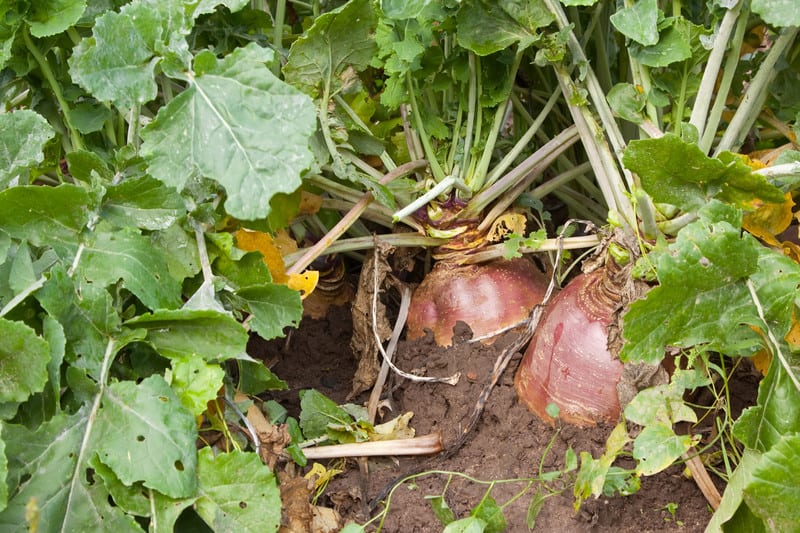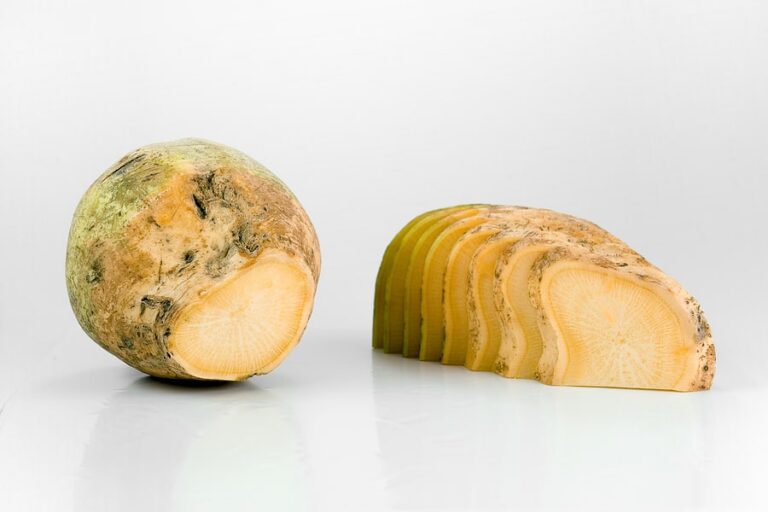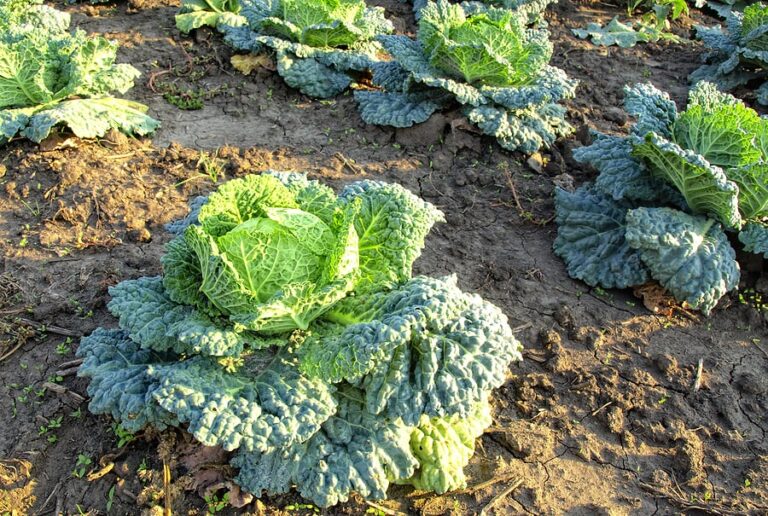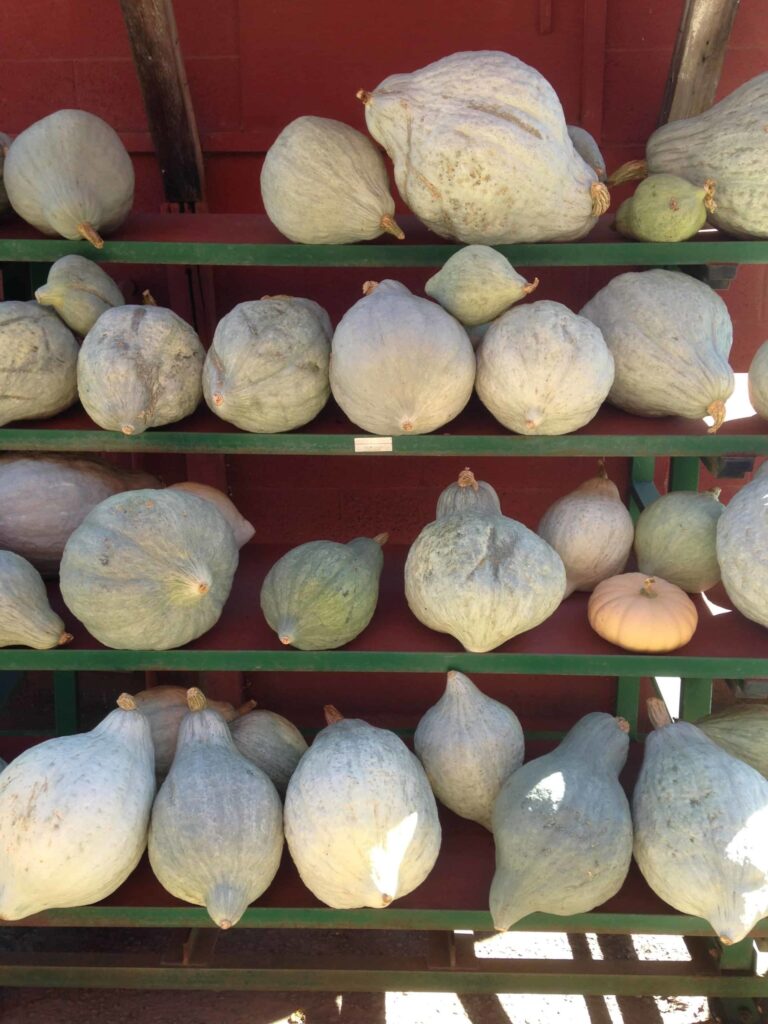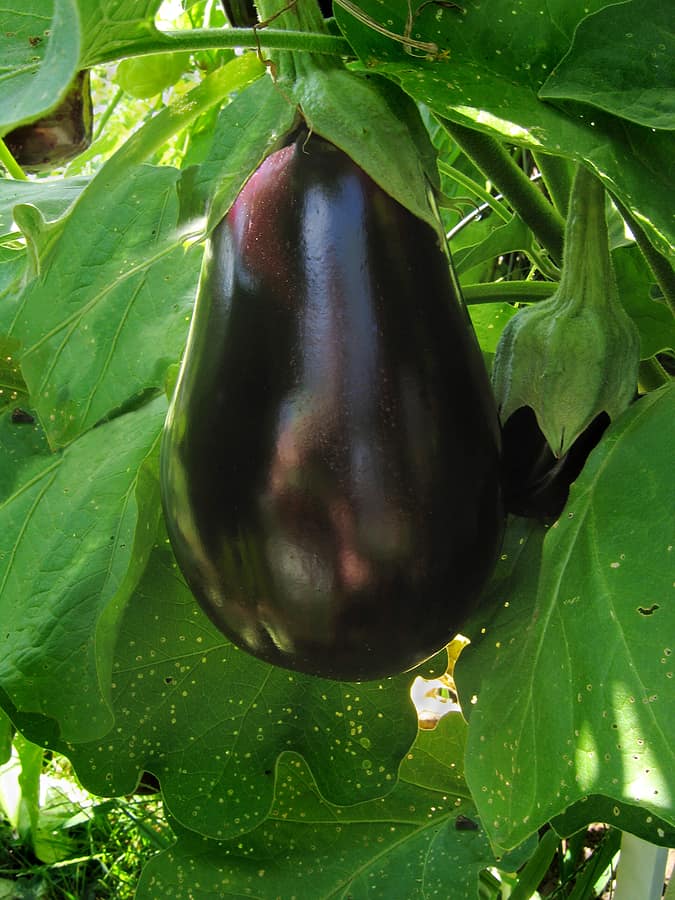How to Harvest and Store Rutabaga
Harvest rutabagas when root tops are 3 to 5 inches in diameter. Young, small roots will be the most tender and succulent. Rutabagas touched by at least two frosts will be the sweetest and most flavorful.
Related articles:
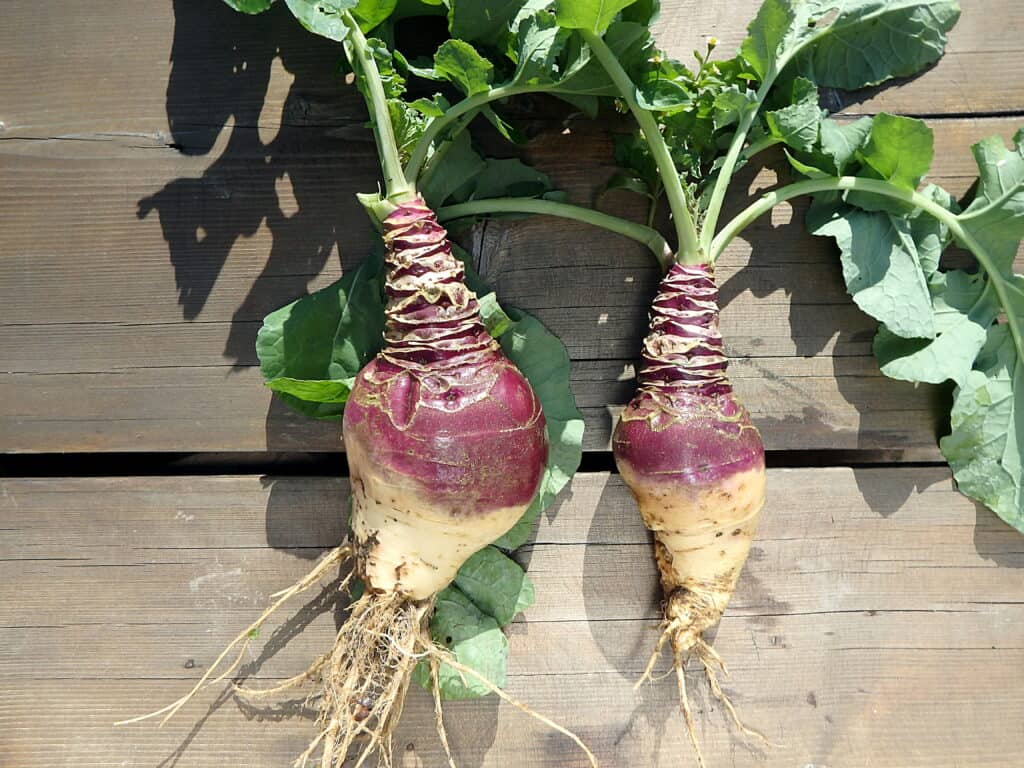
When to harvest rutabaga
- Rutabagas are ready for harvest 90 to 110 days after sowing.
- Harvest rutabagas when the tops are 3 to 5 inches in diameter. If allowed to get too big, rutabagas will become tough and fibrous.
- Harvest rutabaga greens young and tender. Cut the outer leaves an inch or so above the crown and the leaves will grow back quickly. Don’t cut too many leaves or you will slow root growth.
- Rutabagas are cool-season plants that grow best at temperatures between 60° and 65 °F (15-18°C). Rutabagas do not grow well and flavor will suffer if grown where daytime temperatures are consistently greater than 80°F (26°C).
- Where winters are mild and the soil is well-drained, leave rutabagas in the ground until you need them but harvest them before they start growing again in spring.
- Where the ground freezes, lift rutabagas before the soil freezes. If roots freeze, the flavor won’t be good, and a freeze will yellow and wither rutabaga greens.
Kitchen Helpers from Amazon:
- Oster Vegetable Steamer
- Chef’s Knives Set of 6
- EZ Off Jar Opener for Weak Hands
- Pepper Core Remover Stainless Steel
- Kitchen Utensils – Set of 35
- Rachel Ray Non-Stick Cookware 12pcs
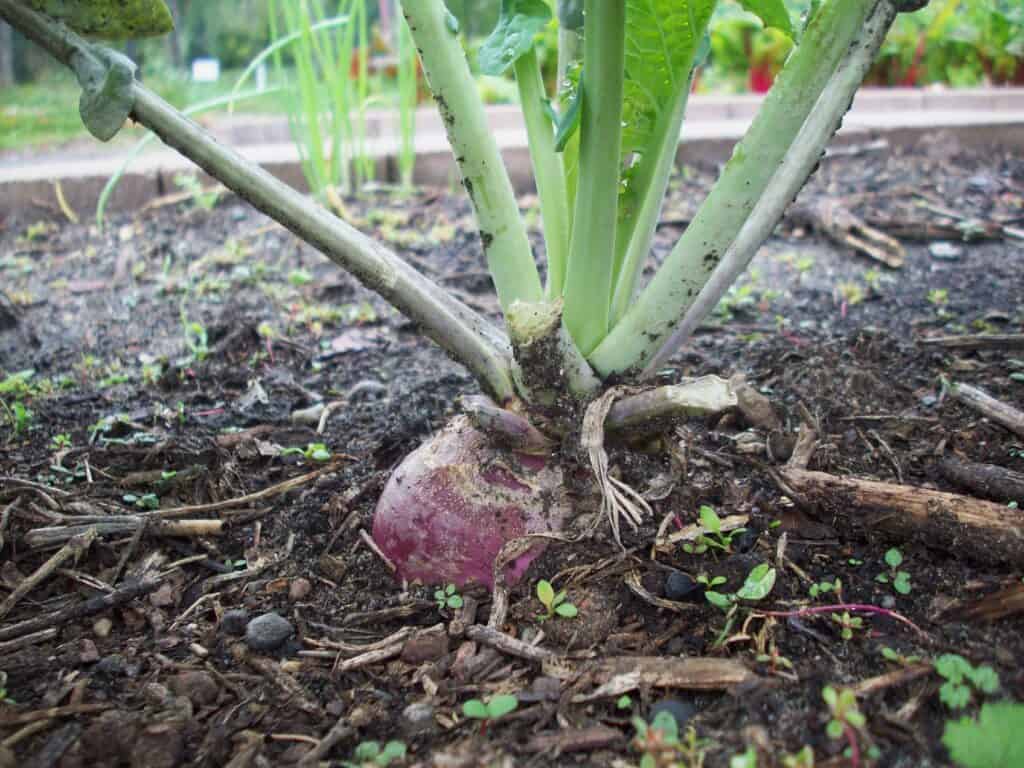
How to harvest rutabaga
- Pull or lift roots carefully from the garden so as not to break or injure them. Use a garden hand fork to loosen the soil around the roots if necessary.
- It’s best to pull rutabagas when the soil is dry.
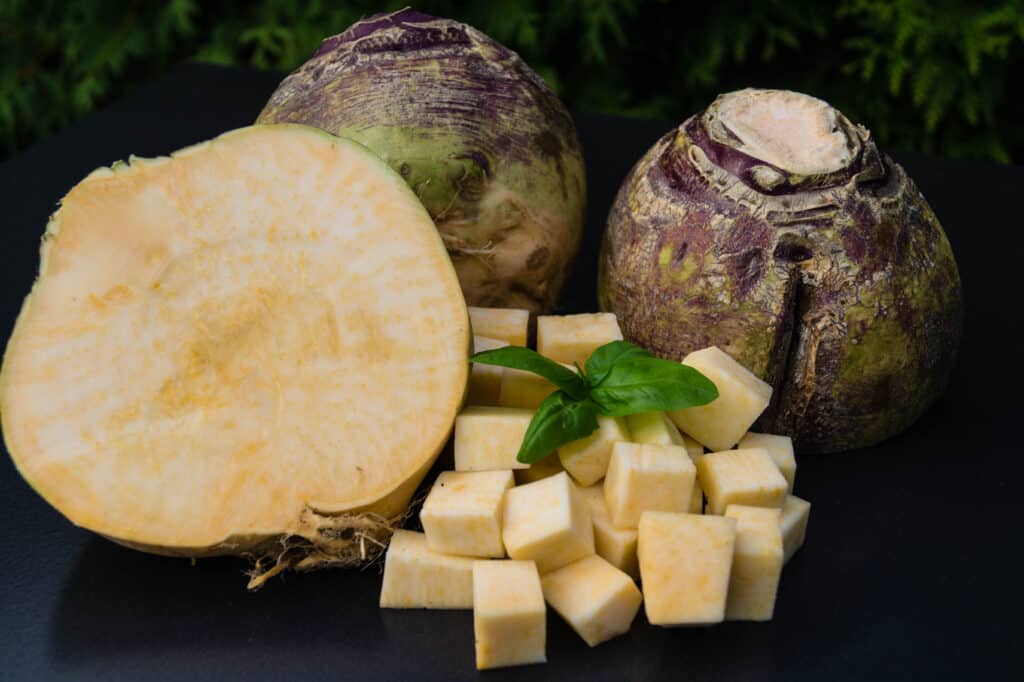
How to Store Rutabagas
- Twist off the greens after lifting the roots. Removing the tops before storage will greatly extend storage life.
- Store the best rutabagas. Bruised or damaged roots will not store well and should be eaten soon after harvest. Gently rub soil from the roots before storing them. Don’t wash roots before you store them; if you do, be sure to dry them thoroughly.
- Store rutabagas in a cold moist place as near to freezing as possible without actual freezing, 32°-40°F (0°-4°C) and 95 percent relative humidity.
- Store rutabagas wrapped in a moist cloth or paper towel placed in a perforated plastic bag in the vegetable crisper drawer of the refrigerator. Rutabagas will keep in the refrigerator for 4 to 5 months.
- Store rutabaga greens just as you would rutabaga roots.
- Rutabagas also can be stored in the garden, root cellar, or garage.
How to store rutabaga in the garden
- Store rutabagas in the garden by insulating the soil from freezing; keep the soil 35° to 40°F (2°-4° C) by putting a 10- to 12-inch-thick layer of leaves, hay, or straw mulch over the rows; extend the mulch on both sides of each row by another 18 inches or more. Mulching will protect roots even beneath two feet of snow. Dig roots through the winter as needed. If rutabagas stay in the ground all winter, harvest them before new top growth starts in spring.
- If roots can’t be protected from freezing soil, dig them up and store them in a root cellar or basement or in a garage where the temperature is about 32° to 38°F (0°-3°C); store roots in a bucket or wooden box filled with just damp sand or sawdust. Pack the roots so that they are insulated and covered and do not touch one another; some moist air must be able to circulate so don’t completely seal the container.
- Rutabagas will store for 4 to 6 months.
- Check roots in storage often and remove any that show signs of deterioration.
Rutabaga articles at Harvest to Table:
How to Plant and Grow Rutabaga
How to Harvest and Store Rutabaga
Turnip, Rutabaga, Kohlrabi Growing Problems: Troubleshooting
Garden Planning Books at Amazon:
- Vegetable Garden Almanac & Planner
- Kitchen Garden Grower’s Guide Vegetable Encyclopedia
- Vegetable Garden Grower’s Guide
- Tomato Grower’s Answer Book
More harvest tips:
Learn when and how to harvest your favorite vegetables for the best flavor and texture. Get storage tips for each crop. Click on the vegetable you are growing below.
- Artichoke
- Arugula
- Asparagus
- Beans
- Beets
- Broccoli
- Brussels Sprouts
- Cabbage
- Cantaloupe — Melons
- Carrots
- Cauliflower
- Celery
- Chard
- Collards
- Corn, Sweet
- Cucumbers
- Eggplant
- Endive and Escarole
- Garlic
- Jerusalem Artichoke
- Kale
- Kohlrabi
- Leeks
- Lettuce
- Melons
- Okra
- Onions
- Parsnips
- Peas
- Peppers
- Potatoes
- Pumpkins
- Radicchio
- Rhubarb
- Rutabaga
- Spinach
- Squash, Summer
- Squash, Winter
- Sunchokes
- Sweet Potato
- Swiss Chard
- Tomatillo
- Tomatoes
- Turnips
- Watermelon

